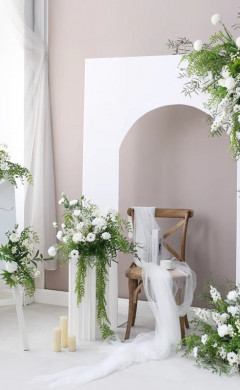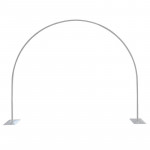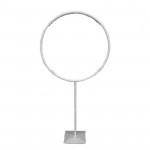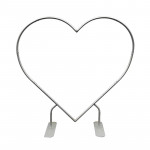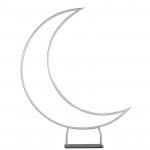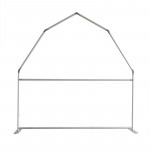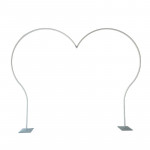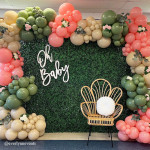How to Choose a Wedding Florist in 5 Steps
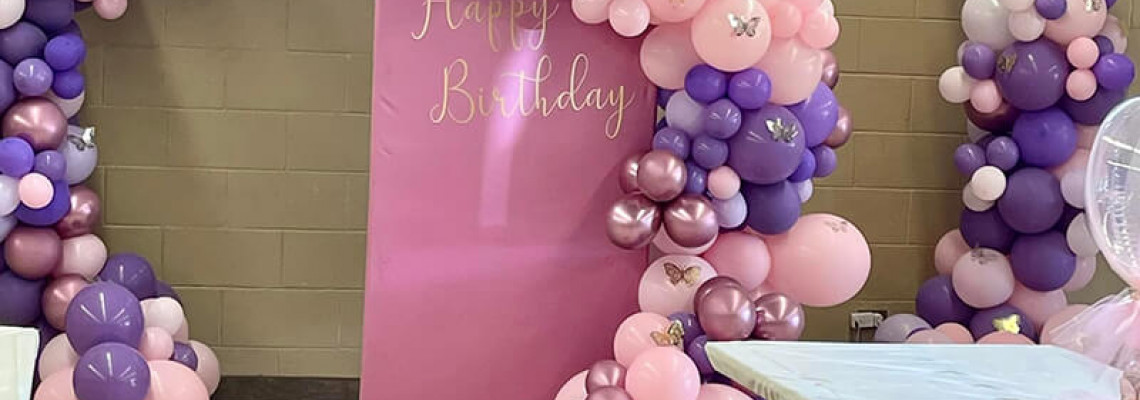
How to Choose a Wedding Florist in 5 Steps
Wedding florists estimate that most couples spend about $2,200 on their floral budget. There is no better way to get financial advice than to engage with a florist who knows that peonies are among the most popular wedding flowers. Discover how to pick a wedding florist with this comprehensive guide and why 4 out of 10 Americans claim that a professional florist has aided them.
See our practical suggestions, free resources, and easy-to-follow guidelines below. After that, go over our list of questions to ask a florist to receive tips on how to steer clear of the most typical floral errors during your wedding.
When should you find a florist for your wedding?
At a minimum, four months prior to the date. The ideal time frame is six to eight months in advance, allowing you to shop around, compare costs, and finalize contract specifics.
Discover how to choose a wedding florist in 5 steps:
Clarify your concept, find a list of skilled vendors, and select the ideal florist for your wedding by following these simple steps.
1. Organize your ideas.
Ideas for arrangements range from a particular kind of flower you like to highlight to a whole bouquet concept. Search for your wedding theme online and see other brides' flowers. Look through family and friend wedding albums. Cut out images from bridal magazines to make a vision board. Collect your floral content in one location and identify reoccurring themes, including flower varieties, hues, and arrangement styles. Adjust your view by using those patterns.
To arrange and present your wedding flower ideas to florists, try one of these free online tools:
- Pinterest: Create a "Wedding Flowers" Pinterest board. Add pins from profiles that are relevant to weddings.
- Creating a Bridal Bouquet: Make a 3D model of the bouquet of your dreams. Use it as a starting point for your bridesmaid bouquets and centerpieces. Upgrade to the premium edition to access expert wedding florists' bespoke bouquet recipes.
- Canvas: Create a mood board with abstract images to capture the emotion you want your flowers to arouse. Upload pictures from your computer or the internet that represent your desired color palette, style, and bouquet shape.
2. Determine how many types of flowers you need.
You can choose to use all of the classic flower arrangements for your celebration, such as a bridal bouquet, corsages, or bouquets for bridesmaids, boutonnieres, centerpieces, cake decorations, and venue decorations.
Large wedding dress accessories called bridal bouquets can be thrown at the reception, look good in pictures, and give the bride something to do with her hands during the ceremony. Bridesmaid bouquets and corsages may create a cohesive party image, which is crucial if they want to wear mismatched dresses. They are also lovely accents to wedding photos.
Nevertheless, you can use less expensive decorations like ribbon bouquets, macramé artwork, or lanterns illuminated by candles instead of flowers. If so, replace the boutonniere flowers with unique and sophisticated options like monogrammed pocket squares or paper cranes. Create floral arrangements for your venue and cake and table centerpieces that complement or echo your bridal bouquet and wedding theme.
Consider your budget when choosing the arrangements you want for your wedding. Your bridal bouquet should come first, followed by the wedding party flowers. Afterward, if you have leftover money, add flowers to your cake, centerpieces, and venue décor.
At the absolute least, consider having one boutonniere for each groomsman, one bouquet for each bridesmaid, and one bridal bouquet. Find out how many floral table centerpieces you'll need using a free 3D wedding design tool such as Social Tables to determine how many tables you'll need for your reception.
To determine how much money you can save by excluding flowers, create your cake with and without them, and then compare the estimations for the two designs. Ask whether they permit outside florists to work in their facility after determining whether your venue needs additional décor.
3. Establish a budget.
Flowers should account for 8–10% of the whole wedding expense. Compare that figure to the typical costs of wedding arrangements from expert florists:
- flowers for a wedding: $100 to $200
- flowers for bridesmaids: $50 to $150 apiece
- Corsages and bouquets: $50 to $150 apiece
- Centerpieces for wedding tables: $125 to $400 each
- Décor for cakes: $25 to $150
- Décor for the venue: $250–750
Include additional costs for delivery and installation (about 6–11% of your overall florist bill), labor (18–20%), rental security deposit (around $50–$100), and, if relevant, state and local sales tax (9–16%). After deducting your desired number of arrangements from your budget and any additional fees and taxes, figure out how much money you will have left over. To make your search more efficient, use that number.
4. Create and vet a list of potential companies.
Begin with first-hand recommendations from friends, relatives, and coworkers. To find highly regarded wedding florists in your area, do a quick internet search on Google, Yelp, and Find a Florist. Write a social media post asking your wider network for recommendations. Read well-known wedding blogs to find award-winning and new wedding florists in your neighborhood.
Compare the following reputable company and sector-specific websites with your list of potential florists:
- Better Business Bureau: Look up the florist's name, last name, and business name. Examine any reviews that actual customers have left.
- Associations of florists at the local, regional, and national levels: Check local associations' directories to determine if anyone on the list is a member.
- Their business's website: View samples of wedding flowers, customer reviews, and honors or recognition.
After you have narrowed it down, search for samples of their work that resemble yours. If they specialize in any wedding themes, pay close attention to them. Additionally, try to identify any commonalities among all of their floral designs. If you decide to hire them, your flower arrangements will probably feature these common traits that make up their signature style.
Please consider how long they have worked in the field and their degree of experience. Professional wedding florists with five to seven years of experience will probably charge average pricing, while florists with more or less experience will charge different prices.
Find out if they operate as a team or alone. More opportunities exist for freelance florists to offer hands-on service, negotiate package discounts, and create unique accommodations. Teams of professional florists exchange great information, expertise, and originality. Additionally, they are better able to adapt to last-minute modifications.
5. Finalize your decision.
Before your first meeting, provide your wedding floral vision board, timeframe, and budget. Incorporate images of your gown, ideas for your wedding theme, and any pertinent cake or venue information.
Request to see a copy of their standard contract. Ask them whether they are flexible with the rules or regulations most important to your wedding. Check to see if this is a deal breaker.
Obtain a comprehensive quote that details the number of flower stems and container type they anticipate using. Flower weeds that are either 1. Too expensive, or 2. unwilling to compromise for fewer stems or less costly vases.
Write down a list of inquiries on their offerings. Before you inquire, check their website's frequently asked questions area to see whether they have the answers. This will save you both time.
Verify cancelation rules, available payment plans, and any additional onsite services you might require. While at it, check availability and minimum order requirements for your wedding date.
To better understand their personality, speak with them in person or over the phone. Determine intuitively if you believe this person can realize your vision. Monitor their response time, communication style, and operating hours closely. Check whether these specifics fit your unique needs or wedding preparation timeframe.
What questions should I ask a wedding florist?
To determine whether a florist is a good fit, find out how much it will cost to work with them, and obtain specific details about how they fit into your wedding planning timeline, ask them the following questions:
- When did you start working as a florist, and why?
- Are you free on the day of my wedding? Are any other activities scheduled on the same day as my wedding, either before or after?
- Could you work within my spending limit? If we go over, what will happen?
- How do you go about becoming creative?
- Which services do you offer? Are there any services I should be aware of that you don't provide?
- Have you already created wedding bouquets similar to those on my vision board?
- What thoughts or recommendations do you have regarding my designs?
- Will you speak with my wedding cake baker and/or venue directly?
- Who is responsible for setting up, taking down, and delivering floral arrangements?
- How does your wedding day timeline look?
- How and when is payment(s) accepted? Are there any payment plans available?
- Do you have any other information on your quote or potential costs?
Avoid these common mistakes when picking a wedding florist:
- Avoid selecting flowers with strong scents. Guests may experience allergic reactions as a result. Choose imitations of your favorite fragrant flowers, or ask your florist to locate a flower with the same shape and color as your original selection but with a subtle aroma.
- Don't put off looking. Plan your flowers when you reserve a space to avoid expensive last-minute reservations and tense do-it-yourself tasks.
- Your inspiration board should not be copied. Have faith that your chosen florist will create a comparable yet entirely original arrangement on your special day.
